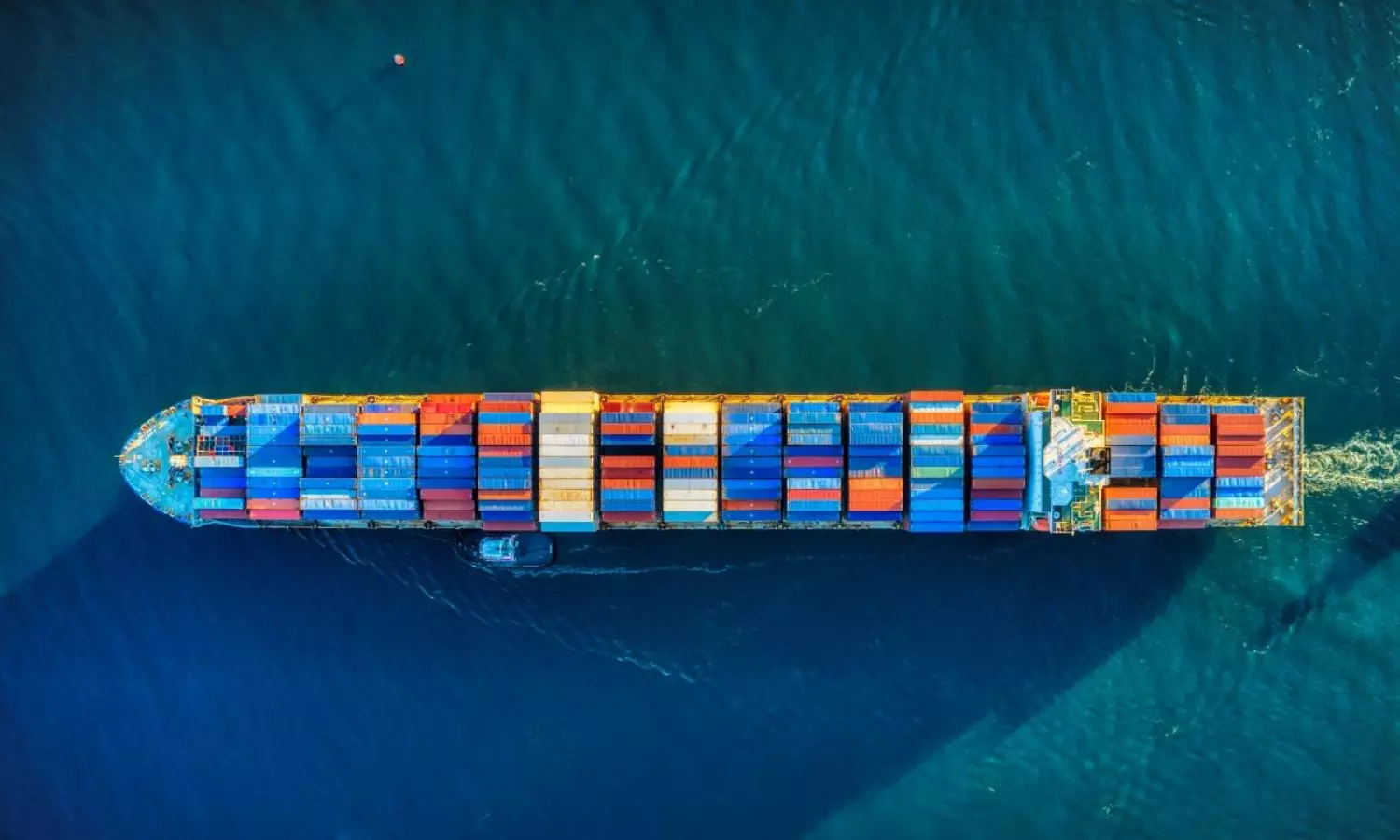Allianz says carriers swimming in money, 2022 to be record year
2022 revenue to be up 19% YoY and operating cash flow to increase 8% YoY.

Photo by Venti Views on Unsplash
After almost doubling its revenues in 2021, the global container shipping sector is heading for another record year as freight rates show no sign of returning to pre-pandemic levels in the short term.
"Considering a sample of 30 global shipping companies, the sector's average revenue growth rate was +70% y/y in 2021, totaling around $11bn per company. The average net profit came to $3.5bn, particularly high for a sector that barely reached breakeven during the past five years," says Allianz Trade in its latest sector update.
Both volume and prices played a role in these record results "but freight rates were and continue to be the growth engine. In terms of volume, the global trade of merchandise grew by +9.8% y/y in 2021 (vs a contraction of -5% in 2020 and a pre-pandemic average pace of +1.6%). In the last 12 months, volume has grown by +5.0%. In terms of prices, the quicker-than-expected recovery of economic activity triggered a record increase in shipping demand that pushed freight rates up a staggering +113% by December 2021. In September 2021, they hit a never-before-seen peak of $10,377/forty-foot box (the pre-pandemic average was around $1,450 USD/forty-foot box)."
Bunker fuel or heavy fuel oil (HFO), a derivative residue from crude oil distillation and the most used fuel in shipping, has become more expensive with prices soaring 45 percent in 2021. The price of marine gas oil, another commonly used fuel in the industry, has increased 27 percent year to date, while the price of greener fuels such as LSMGO and VLSFO have zoomed 56 percent and 26 percent, respectively. These increasing prices will continue to influence freight rates as fueling represents around 16 percent of shipping companies' operating costs, the report said.
Profits are likely to be even better in 2022 as freight rates remained very high at the start of the year (around $9,500/FEU between January to March) because of supply chain pressures. "The rates started to decline in April (average pace of -1.4 percent weekly), and should fall further in the coming months, the report said. "Yet, we estimate they will still remain above the historical average ($1,450/forty-foot box) in the second half of 2022 and even throughout 2023: an average of $7,350/forty-foot box for the full-year 2022 and $4,550/forty-foot box for 2023."
More orders for new ships Flush with cash, carriers have stepped up orders for new ships: average capex increased 61 percent YoY in 2021. "However, these new orders will not dramatically increase global shipping capacity as the green transition forces companies to retire old vessels that do not comply with current and upcoming international regulations for sulphur (IMO 2020) and carbon (IMO 2023) emissions (see annex). As a result, we expect that the sector's increasing capital investments will modernise fleets rather than fully expanding them."
As interest rates rise, cash outflows are also expected in the short-term for debt repayment, the report said. Despite having collected huge amounts of cash in 2020 (+16 percent YoY) and 2021 (+162 percent YoY), the sector's average gross debt was reduced only by 3 percent YoY in 2020 and -5% YoY in 2021. This will surely lead companies to allocate a considerable part of the extra cash generated from high freight rates for deleveraging: "We estimate shipping companies will reduce their debt by around 16 percent YoY this year and by 11 percent in 2023."
Put together, these two factors will reduce the cash available for business expansion, the report concluded.


